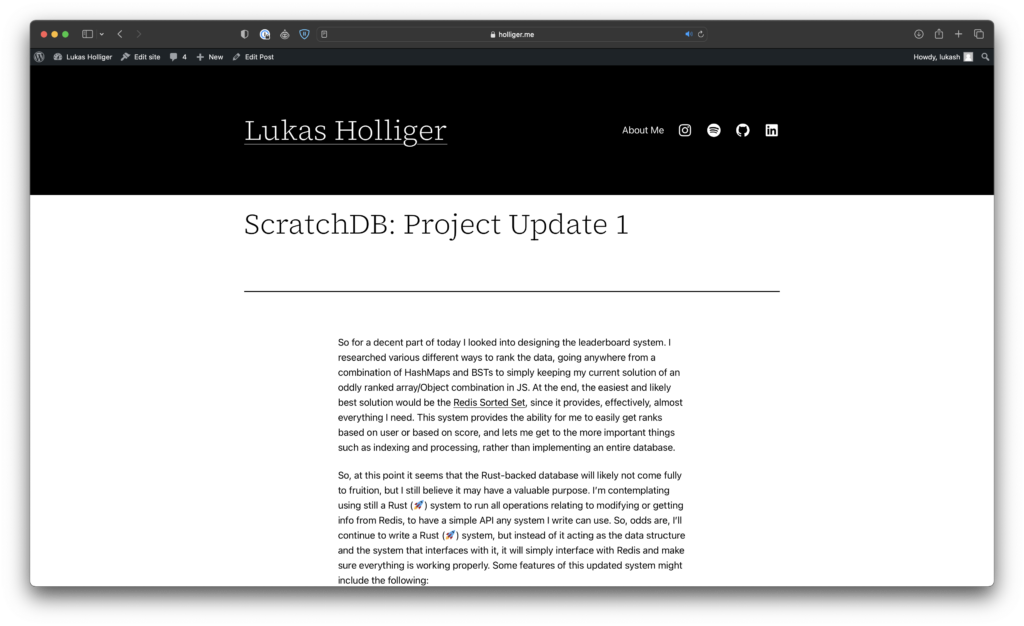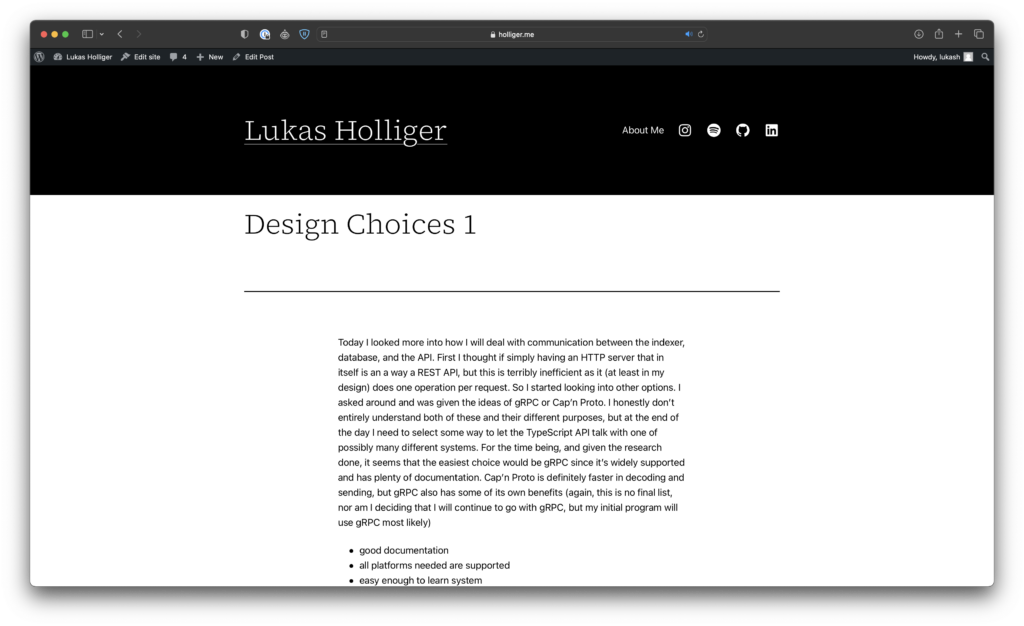Surprisingly as compared to much of my other work, there actually was a few blog posts that went into making this document (two).

The design of my project started (and seemingly ended) at these two blog posts. So starting at this first one, this “Project Update 1” was the first seemingly “revision” to my public proposal for the newest version of my project. (This is available to read here: https://holliger.me/projects/2023/02/scratchdb-update-170/) That post effectively laid the groundwork for what I wanted my project to be, before I did any sort of research as to the best ways. The post was written as a series of, effectively, promises that I wanted to keep, but after further time in the class I learned that many parts of it would change and that the project would take much longer than expected.
I stated that the project would use a Rust (🚀) (this is a programming language known for its extremely fast speeds relating to data processing) sorting system that I would custom write. After just a little bit of research and pre-planning, I discovered that utilizing a system called Redis would be a much better option, since it has everything I want already built in, and I couldn’t write anything more optimized and faster than what it was, most likely.

My second post was a much more technical article than the first, since I got into depth on how my different programs would communicate. By taking time to research a way to design communications, I was able to discover systems that are much quicker than what I originally planned, this is again, all thanks to the research methods and time it takes to look over sources discussed in class.
So now with both of these documents, I was able to get started on the annotated bibliography, which was effectively somewhat of a status update in itself since it provided a little bit of a path of how I wanted to design the project. To be quite honest, a lot of the parts of this were written extremely last minute, but I ended up getting extremely good information out of the articles I found. I originally thought I would use much of the same databases I used in the past, such as MySQL for storing user information and ElastiSearch for looking through forum posts, however after some research I discovered much better systems that would be much faster for my users, and also provide some more options for future growth in the system.
The annotated bibliography originally for me was quite truthfully an assignment that I needed to get done quickly and I needed to simply find any source that worked, but as I got started on the sources I was missing, it began to act as simply another source for research. I think that’s simply a part of the beauty of the class: something seemingly random and English-related becomes a valuable lesson for other pieces of research.